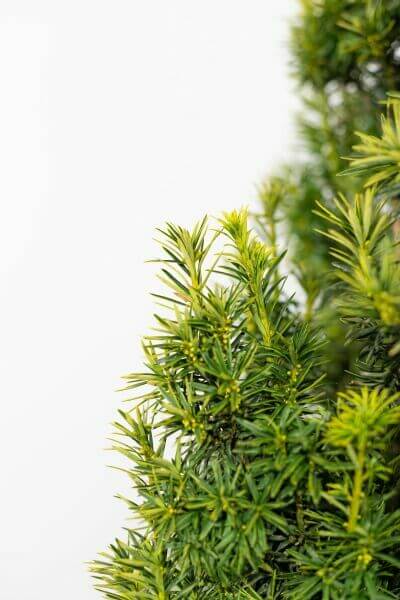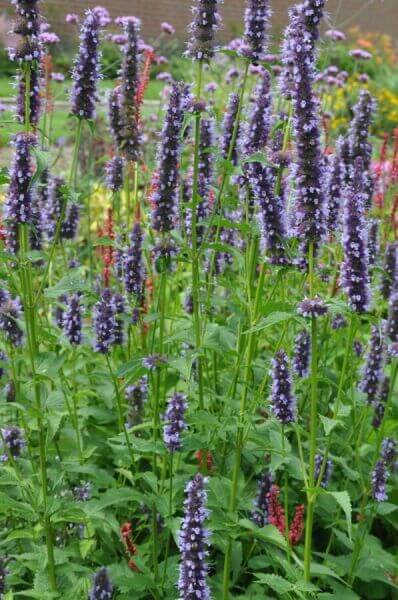Hedge Plants For Creating Shade
Hedge Plants For Creating Shade
Blog Article
Best Hedging Plants For Terrace Gardens
Boost your garden's attraction with lavish hedge ranges such as Yew (Taxus), Thuja, Laurel, Photinia, and Bamboo, celebrated for their structural stability and environmental advantages.
Yew and Thuja supply evergreen coverage and winter season durability, while Laurel provides fast development and broad, aromatic leaves.
Photinia includes seasonal beauty with its vibrant red foliage, and Bamboo lends a low-maintenance, tranquil atmosphere.
These hedges enhance air quality, minimize sound, and create tranquil, personal spaces.
Correct planting, spacing, and upkeep make sure vigorous development and ecological harmony.
Check out how these rich varieties can raise your garden's charm and wellness.
Key Takeaways
Transform Your Garden With Lush Hedge Varieties
- Select Yew for its dense, evergreen development and unequaled longevity.
- Opt for Laurel for its quick development and broad leaves, making sure fast personal privacy.
- Choose Photinia for its dynamic seasonal foliage, which turns a striking dark red.
- Make use of Bamboo for a low-maintenance, winter-hardy hedge with aesthetic appeal.
- Space plants 2-3 per meter and prune routinely for optimum growth and health.
Popular Hedge Plants
When transforming a garden with rich hedge ranges, it's necessary to think about popular hedge plants such as Yew, Thuja, Laurel, and Photinia due to their special attributes and advantages.
Yew (Taxus) is highly respected for its longevity and dense, green growth, making it a prime choice for withstanding landscapes.
Thuja is kept in mind for its evergreen foliage and robust winter season durability.
Photinia includes seasonal vibrancy with red leaves that darken gradually, creating vibrant visual appeal.
Laurel offers fast growth and aromatic, broad leaves, perfect for quick personal privacy.
Furthermore, Bamboo is an exceptional option for atmosphere, offering a low-maintenance, winter-hardy choice that boosts the garden's aesthetic with its classy, swaying walking canes.
These choices cater to a variety of horticultural requirements and preferences.
Benefits of Garden Hedges
Garden hedges use a wide range of benefits, making them an important addition to any landscape. These natural barriers are cost-effective to implement and supply significant wind defense, improving air circulation and adding to noise decrease. The dense foliage of hedges like Thuja and Beech guarantees privacy by obstructing exposure, producing a remote and serene environment.
Hedges also play an essential role in microclimate policy, providing a stable environment that cultivates plant growth and lessens temperature changes. Their intricate leaf structures filter toxins, enhancing air quality and contributing to a much healthier garden community.
Additionally, hedges excel in noise decrease, absorbing and deflecting sound waves to lower ambient sound levels. This double functionality of providing both acoustic and visual personal privacy enhances the general serenity and visual appeal of any garden.
Planting and Maintenance Tips
For a successful hedge, precise preparation of the planting location is vital. Guarantee the soil has correct pH and drain to support strong root development.
Space the plants appropriately for the selected types. Water the hedge regularly throughout its preliminary growth phase, adjusting as needed with seasonal changes.
Implement a methodical insect control and illness avoidance method, utilizing chemical or natural treatments when needed. Frequently check for aphids, termites, and fungal infections.
Apply mulch to keep moisture and suppress weeds. Seasonal pruning promotes dense growth and air circulation, essential for plant health.
Following these guidelines will assist you cultivate a lively, properly maintained hedge that boosts the charm of your garden.
Spacing and Trimming Guidelines
Spacing and Cutting Standards
Appropriate spacing and cutting are vital for cultivating healthy, aesthetically appealing hedges. Sufficient spacing ensures each plant receives enough nutrients, light, and air flow.
Follow these guidelines for optimal hedge upkeep:
- Spacing: Position hedge plants 2-3 plants per meter to motivate robust growth.
- Pruning Strategies: Routine pruning is important for keeping preferred hedge height and shape. Trim brand-new growth in summer and cut down older wood during winter season.
- Seasonal Care: Adjust cutting schedules and techniques according to seasonal requirements to make sure plant health.
- Hedge Height: Routinely monitor and cut to maintain the preferred hedge height and achieve uniform aesthetic appeals.
Abiding by these steps will guarantee your hedge thrives, boosting both the appeal and functionality of your garden.
Selecting the Right Hedge
Choosing the Right Hedge
Selecting the proper hedge involves examining factors such as mature height, foliage density, and ecological resilience. Successful hedge plant choice requires understanding each types' development characteristics and site-specific versatility.
For instance, Yew (Taxus) offers outstanding durability and thick growth, while Thuja is noteworthy for its winter season strength. Additionally, considering maintenance requirements is important; fast-growing types like Laurel or Privet need routine trimming, whereas low-maintenance options like Bamboo or Ivy might be more suitable for those seeking minimal upkeep.
Environmental elements such as soil type, light schedule, and wetness conditions need to likewise assist the selection procedure. This careful technique ensures the selected hedges will thrive, offering both practical and visual benefits to the garden landscape.
Shipment and Planting Suggestions
To ensure your hedge plants prosper, they need to be delivered by specialized couriers and planted without delay upon arrival.
Follow these important steps for effective planting:
- Soil Preparation: Enrich the soil with raw material to enhance drain and nutrient material.
- Planting Depth: Create a trench twice the width and equal to the depth of the root ball.
- Watering Strategies: Water completely after planting, keeping the soil consistently moist but not saturated.
- Mulching: Use a layer of mulch to maintain wetness and suppress weeds.
Customer Support and Service
Provided the vital function of prompt assistance in horticultural pursuits, our customer support team is offered six days a week through telephone, e-mail, and social networks to use skilled suggestions and promptly address any concerns. Their dedication to quick response times ensures customer satisfaction by resolving queries related to plant health, optimal planting methods, and upkeep schedules.

Within 24 hours
This detailed assistance system, enhanced by a stellar 9.3/ 10 customer rating, highlights our commitment to improving the gardening experience for each customer.
Regularly Asked Concerns
How Long Does It Take for Hedge Plants to Establish?
Hedge plants typically require one to three years to end up being completely developed, with the precise duration varying by species and growing conditions.
Efficient care during this crucial period is vital for robust development. Constant watering, watchful weed control, and suitable fertilizer application are critical in promoting strong root development.
For example, fast-growing types like Laurel might develop faster, while slower-growing varieties such as Yew might take longer. Diligent upkeep speeds up the establishment process, resulting in thick and healthy hedges.
What Are the Finest Hedge Plants for Personal Privacy?
The question of the very best hedge plants for privacy includes assessing evergreen and deciduous choices.
Evergreen hedges like Thuja, Laurel, and Cypress provide year-round coverage, making sure constant privacy.
On the other hand, deciduous hedges such as Beech use seasonal privacy, shedding leaves in colder months.
Secret maintenance tips for personal privacy hedges include regular cutting, fertilizing in spring, and appropriate spacing-- generally 2 to 3 plants per meter.
In addition, constant watering and diligent weed elimination are essential for promoting healthy, thick development.
Can Hedge Plants Attract Wildlife to My Garden?
Yes, hedge plants can bring in wildlife to your garden by providing necessary benefits like shelter, food, and nesting websites, consequently enhancing regional biodiversity. For example, yew, holly, and laurel are exceptional for drawing in birds, while ivy supports a range of bugs.
However, it is necessary to note that there are some downsides, such as increased maintenance to handle pests and regular maintenance. Carefully choosing and maintaining hedge varieties can help balance these disadvantages and advantages, ultimately promoting a lively and sustainable community in your garden.
Exist Any Flowering Hedge Plants Available?
Yes, there are flowering hedge plants offered that can improve the appeal of your garden.
For example, Elaeagnus, also called Olive Willow, produces aromatic white flowers in the fall, adding a touch of beauty.
Photinia, another popular option, showcases lively red leaves that mature into a rich green, producing a vibrant visual result throughout the seasons.
To ensure these plants flourish, it's important to practice correct pruning strategies and seasonal maintenance, such as trimming new growth in the summertime and cutting down in the winter season.
These procedures will assist keep the health and visual appeal of your blooming hedges.
How Do I Avoid Pests in My Hedge Plants?
To prevent pests in hedge plants, employ natural pest control techniques and preserve appropriate hedge care. Introduce advantageous bugs like ladybugs, which take advantage of hazardous insects, to produce a balanced ecosystem.
Routinely check your hedges for indications of invasion and without delay get rid of any afflicted parts to avoid the spread. Guarantee the health of your hedges by applying balanced fertilizers and providing adequate water.
Make use of mulching to maintain soil wetness and appropriate spacing to decrease plant stress and promote robust development. These practices jointly assist in reducing pest issues and keeping a healthy hedge.
Conclusion
In essence, picking the best hedge varieties such as Yew, Thuja, and Laurel can transform any garden into a serene sanctuary. These plants offer year-round greenery, boost visual Browse this site appeal, and offer useful advantages like noise decrease and wind security.
Proper planting strategies, precise spacing, consistent watering, and seasonal cutting are crucial for optimal development.
Reliable shipment services and professional customer assistance ensure a smooth experience from purchase to planting, making it simpler than ever to raise your outdoor area.
Garden hedges provide a multitude of advantages, making them a valuable addition to any landscape. These natural barriers are cost-efficient to execute and supply considerable wind defense, improving air circulation and contributing to noise decrease. The dense foliage of hedges like Thuja and Beech makes sure privacy by blocking visibility, developing a remote and serene environment.

Pruning Methods: Regular pruning is essential for keeping preferred hedge height and shape. Trim brand-new development in summer and cut back older wood throughout winter season.
Report this page